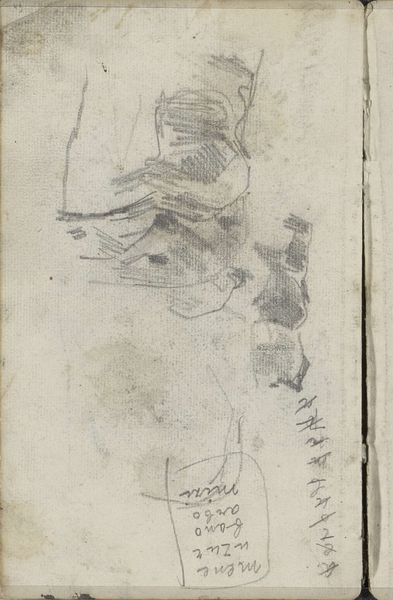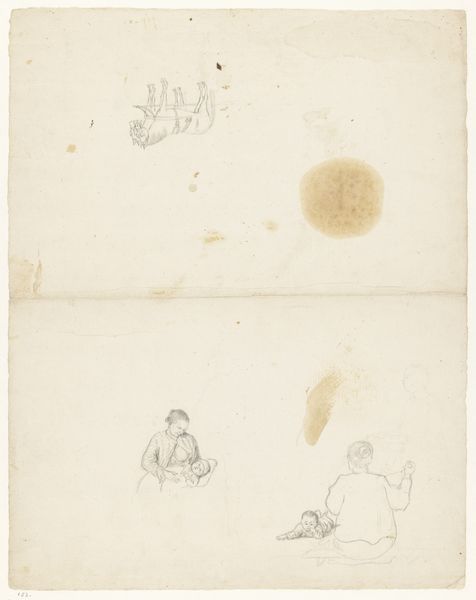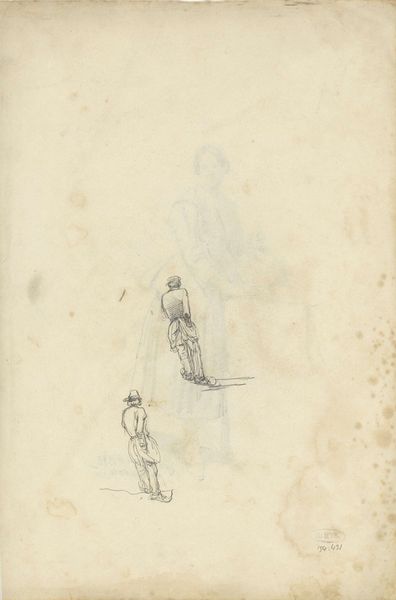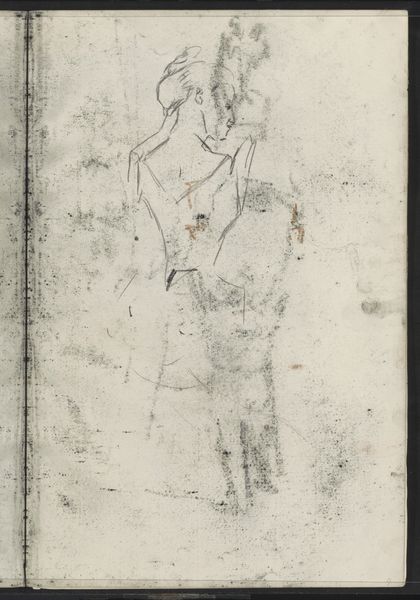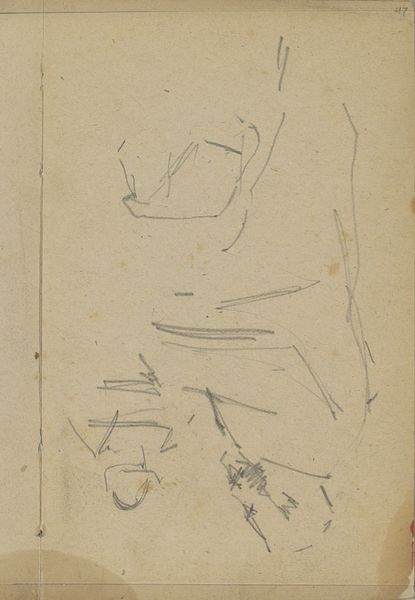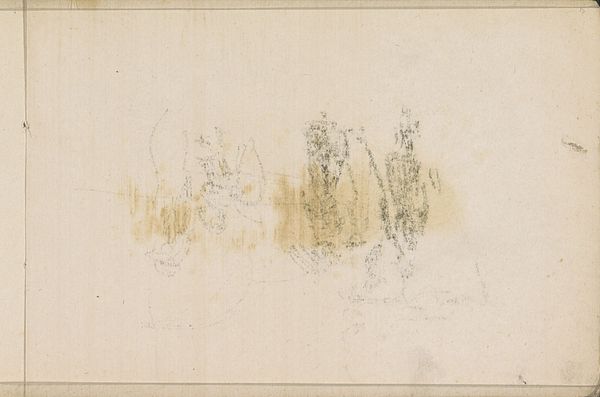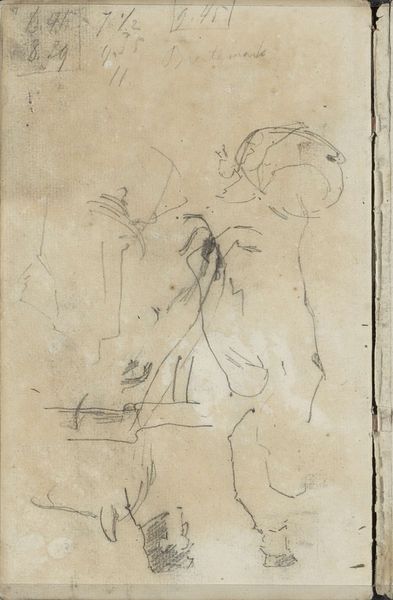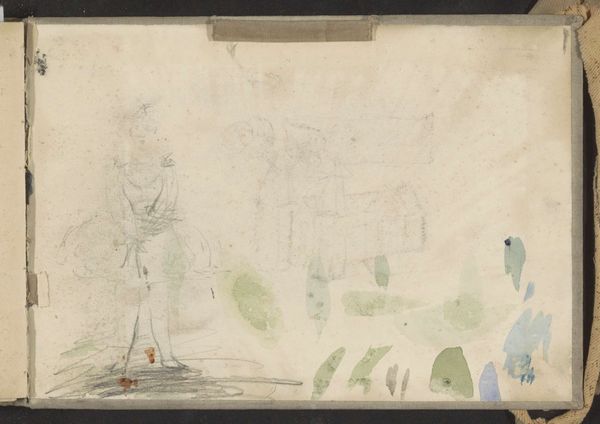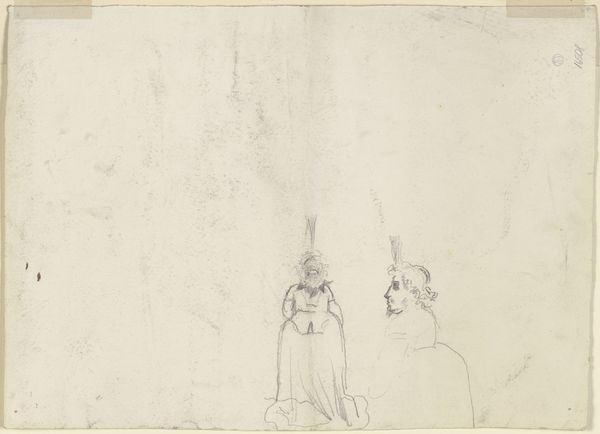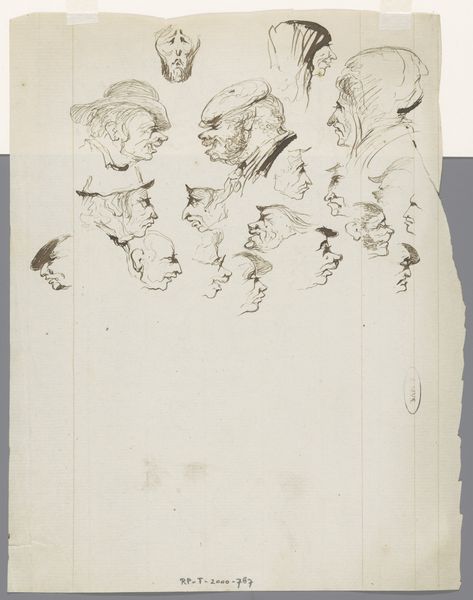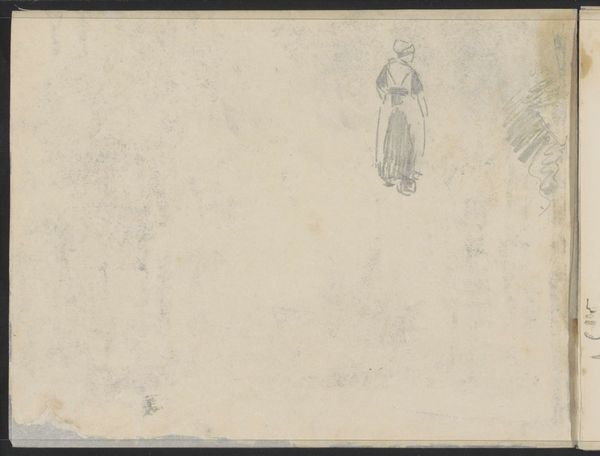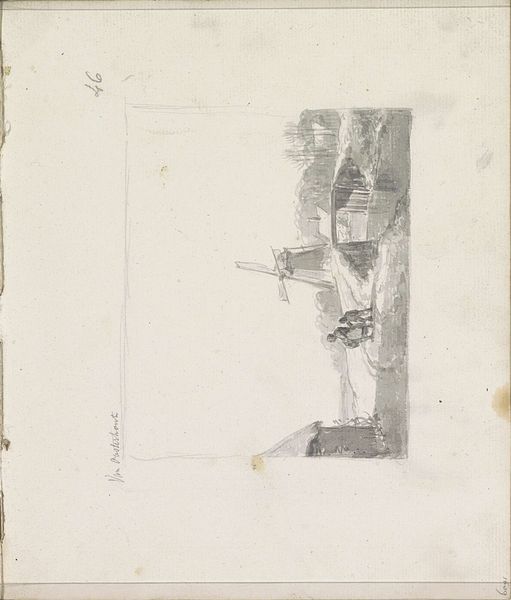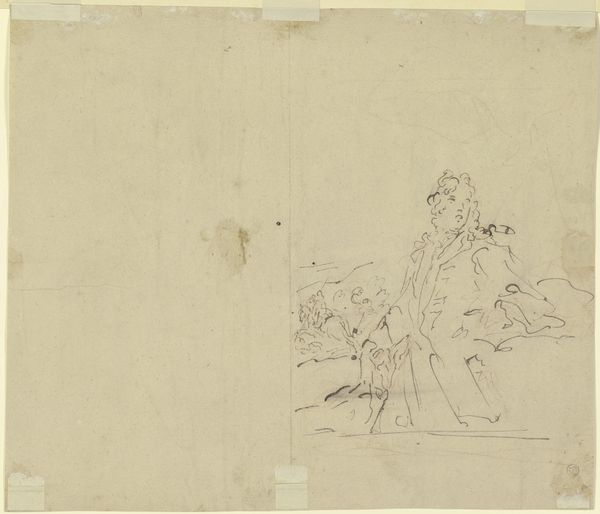
drawing, paper, watercolor, pencil
#
portrait
#
drawing
#
paper
#
watercolor
#
romanticism
#
pencil
#
watercolour bleed
#
watercolour illustration
#
genre-painting
Dimensions: height 228 mm, width 361 mm
Copyright: Rijks Museum: Open Domain
Curator: This is a piece by Pieter van Loon titled "Sketches of Seated Figures," created around 1839. It’s currently housed here at the Rijksmuseum. Editor: It feels… fragmented. Like snippets of different stories caught in a single frame. A study in observation, perhaps? There's a prevailing sense of melancholy in the posture of those seated figures. Curator: Van Loon primarily worked in drawings, and this piece beautifully exemplifies that. You can see his use of pencil and watercolour on paper— it's interesting how he uses both precise lines and these subtle washes of color. Note also how it appears to include an upper part and a lower section which almost looks like separate pages combined. Editor: The lower register feels heavy, weighted down by those figures cloaked in what seem like bonnets and draped fabric. I’m interested in how these forms speak to the restrictive clothing of the time period for women, or how genre painting was emerging as a legitimate topic for artists. Does Van Loon use the medium of sketch to free himself? To comment perhaps? Curator: Well, sketches can offer more intimacy, certainly. Beyond simply documenting, the genre aspects allow him to subtly tap into themes of everyday life, presenting an intimate perspective that challenges the grand narratives. We should note, however, that while we are viewing this work through the lens of contemporary gender studies, Van Loon's likely aim was to capture everyday life— and even the commercial appeal in picturesque studies of daily Dutch life. Editor: Maybe so. Yet those somber tones, even in this seemingly simple work, speak volumes about the unsung burdens of everyday people. The way their bodies seem to sink into themselves— it’s suggestive. It implies stories of labor, domestic constraint... I find them both haunting and oddly familiar. What stories, though, were actively omitted from that "picturesque view?" Curator: You raise an interesting point. Perhaps in future studies, further research should incorporate voices and perspectives not traditionally included in art historical scholarship to allow for an exploration into more intersectional readings of artwork from this period. I also wonder what other symbols and hidden meanings will unfold. Editor: Absolutely, for now it makes you think more broadly about art historical research, and I look forward to thinking about that in relation to what else we might find today.
Comments
No comments
Be the first to comment and join the conversation on the ultimate creative platform.
